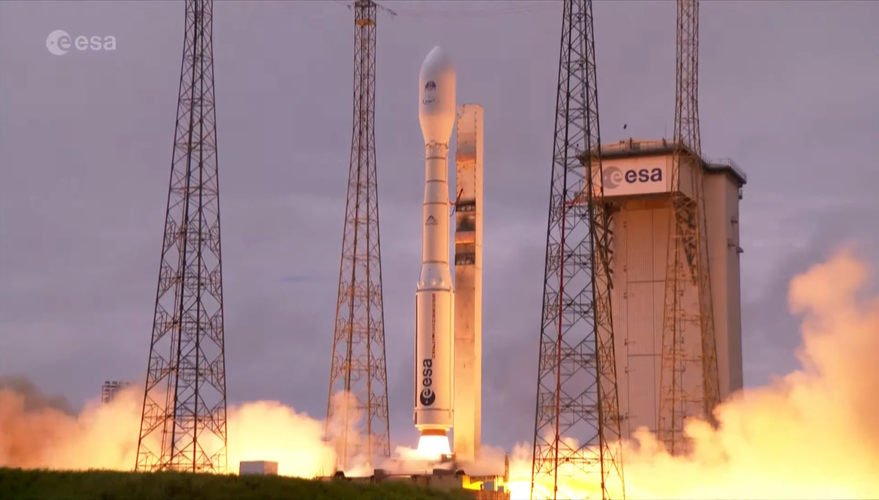
Vega-C features a new, more powerful first stage, P120C, based on Vega’s P80. Atop that is a new second stage, Zefiro-40, and then the same Zefiro-9 third stage as used on Vega.
The re-ignitable upper stage is also improved. AVUM+ has increased liquid propellant capacity, to deliver payloads to multiple orbits depending on mission requirements and to allow for longer operational time in space, to enable extended missions.
The P120C motor will do double service, with either two or four units acting as strap-on boosters for Ariane 6. Sharing this component streamlines industrial efficiency and improves cost-effectiveness of both launchers.
With its larger main stages and bigger fairing – which doubles the payload volume compared to Vega – Vega-C measures 34.8 m high, nearly 5 m taller than Vega.
The new launcher configuration delivers a significant improvement in launch system flexibility. Vega-C can orbit larger satellites, two main payloads or accommodate various arrangements for rideshare missions. ESA’s upcoming Space Rider return-to-Earth vehicle will be launched to orbit on Vega-C.
The precise orbital path of LARES-2 will be tracked by laser, from ground stations. The purpose of the mission is to measure the so-called frame-dragging effect, a distortion of space-time caused by the rotation of a massive body such as Earth as predicted by Einstein’s General Theory of Relativity. Its predecessor, the similar LARES, was the main payload on the 2012 inaugural flight of Vega.
Six CubeSats made a secondary payload package. AstroBio CubeSat (Italy) will test a solution for detecting biomolecules in space. Greencube (Italy) carries an experiment to grow plants in microgravity. ALPHA (Italy) aims to help understand phenomena related to Earth’s magnetosphere, such as the Northern and Southern Lights.
Three other CubeSats – Trisat-R (Slovenia), MTCube-2 (France) and Celesta (France) will study the effects of a harsh radiation environment on electronic systems.



